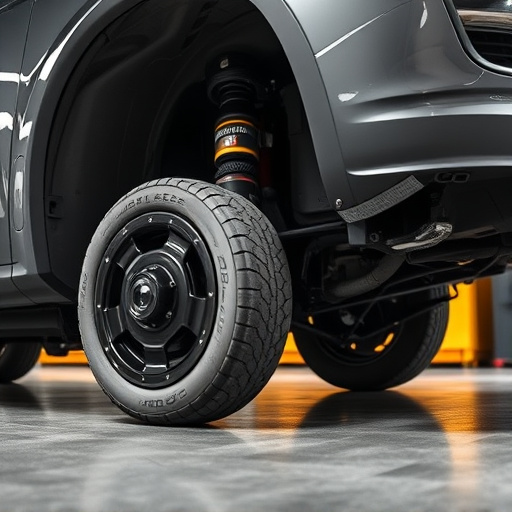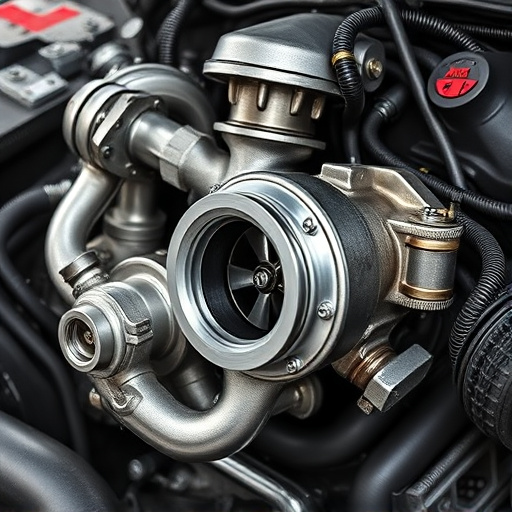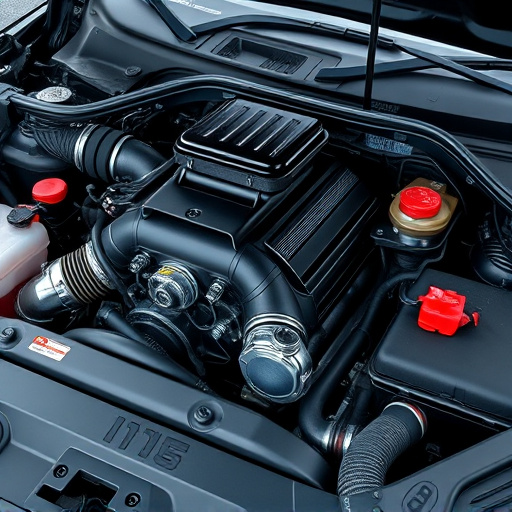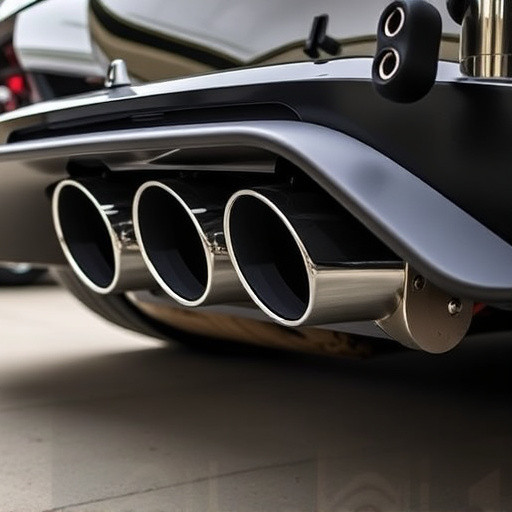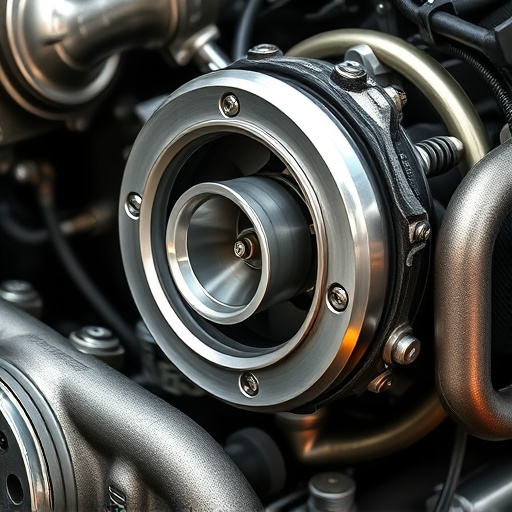Suspension arm bushings are crucial for vehicle stability and handling. They degrade over time, causing issues like increased body roll, uneven tire wear, and rough rides. Symptoms include unusual wheel noises, impaired handling, and damaged components. Regular inspection and replacement prevent safety risks associated with worn-out bushings, alongside other critical parts like brakes and exhaust systems.
Are you experiencing unusual vehicle handling or noise from your suspension? The culprit could be worn out suspension arm bushings. These components play a crucial role in maintaining alignment and smooth ride quality. This article guides you through understanding the function of suspension arm bushings, recognizing common symptoms of failure, and following diagnostic steps to identify related suspension issues for timely replacement.
- Understanding Suspension Arm Bushings and Their Function
- Common Symptoms of Suspended Arm Bushing Failure
- Diagnostic Steps for Identifying Related Suspension Issues
Understanding Suspension Arm Bushings and Their Function
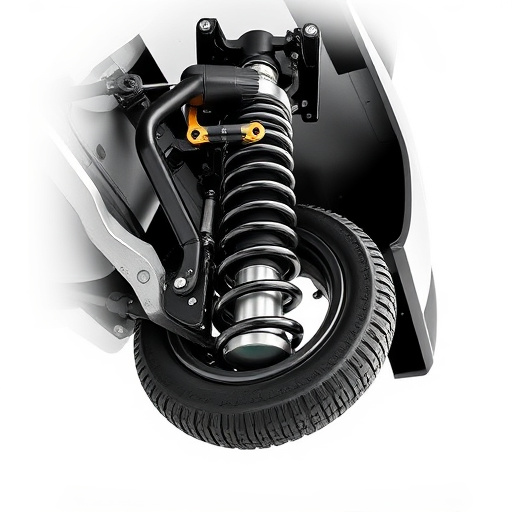
Suspension arm bushings play a pivotal role in your vehicle’s overall stability and handling. These components act as bearings that connect the suspension arms to other parts of the suspension system, such as control arms, spindles, or steering knuckles. Their primary function is to allow for smooth rotation and movement while reducing friction and wear between these critical components. Over time, bushings can degrade due to constant impact, road debris, and exposure to harsh elements, leading to issues like increased body roll, uneven tire wear, and a rough ride.
Understanding the role of suspension arm bushings is crucial for identifying related problems, especially when considering upgrades like cold air intakes or performance brakes that might enhance driving dynamics. Worn bushings can cause misalignment and irregular tire pressure distribution, which can be exacerbated by high-performance components. Regular inspection and replacement of these parts are essential to maintain optimal vehicle performance and safety, ensuring a smooth and responsive drive with your suspension kits in place.
Common Symptoms of Suspended Arm Bushing Failure
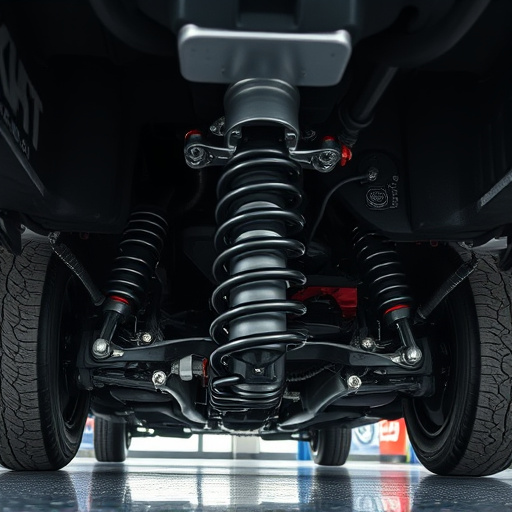
The failure of suspension arm bushings can manifest in various ways, indicating a need for closer inspection and potential replacement. One of the most noticeable symptoms is an abnormal noise coming from the wheels, particularly when traversing over bumps or uneven roads. This sound can range from a clicking to a thumping or squeaking, often described as a high-pitched whine. Uneven tire wear is another red flag; if one side of your tires appears significantly more worn down than the other, it could be an indication of misaligned wheels caused by damaged suspension bushings.
Additionally, vehicle handling and stability can be affected. You may notice a distinct pull to one side while driving at speed or an unpredictable steering response. This is especially concerning as it can impact safety, particularly during frenzied stops and turns. Other symptoms include increased vibrations felt through the steering wheel or seats, especially at higher speeds, and a noticeable dip or change in the vehicle’s handling dynamics when passing over bumps or changing lanes. These issues can also be compounded by other components like worn-out brake pads, exhaust systems, or air intake systems, making it crucial to have your suspension arm bushings inspected as part of regular maintenance.
Diagnostic Steps for Identifying Related Suspension Issues
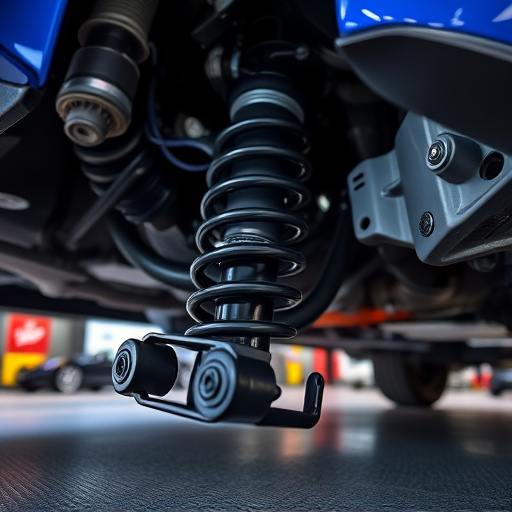
To diagnose issues related to suspension arm bushings, start by inspecting the bushing itself for any signs of damage or wear. This can include cracks, fractures, or a distorted shape. Next, check for excessive play or loose movement in the suspension arm, indicating potential bushing degradation.
Further diagnostic steps involve comparing the affected bushing with new ones to visually assess differences in size and texture. Also, consider examining other suspension components nearby for any related damage. Additionally, testing the vehicle’s handling and ride quality can help identify unusual vibrations or a rough ride, suggesting issues with suspension arm bushings or complementary suspension kits.
Diagnosing issues with suspension arm bushings is a crucial step in maintaining optimal vehicle performance. By recognizing common symptoms like unusual noises, handling problems, and tire wear, you can proactively address potential problems. Through systematic diagnostic procedures that involve visual inspections, road tests, and advanced scanning tools, it’s possible to pinpoint specific suspension issues related to these bushings. Armed with this knowledge, you can make informed decisions on repairs or replacements, ensuring your vehicle’s suspension remains in top shape.



